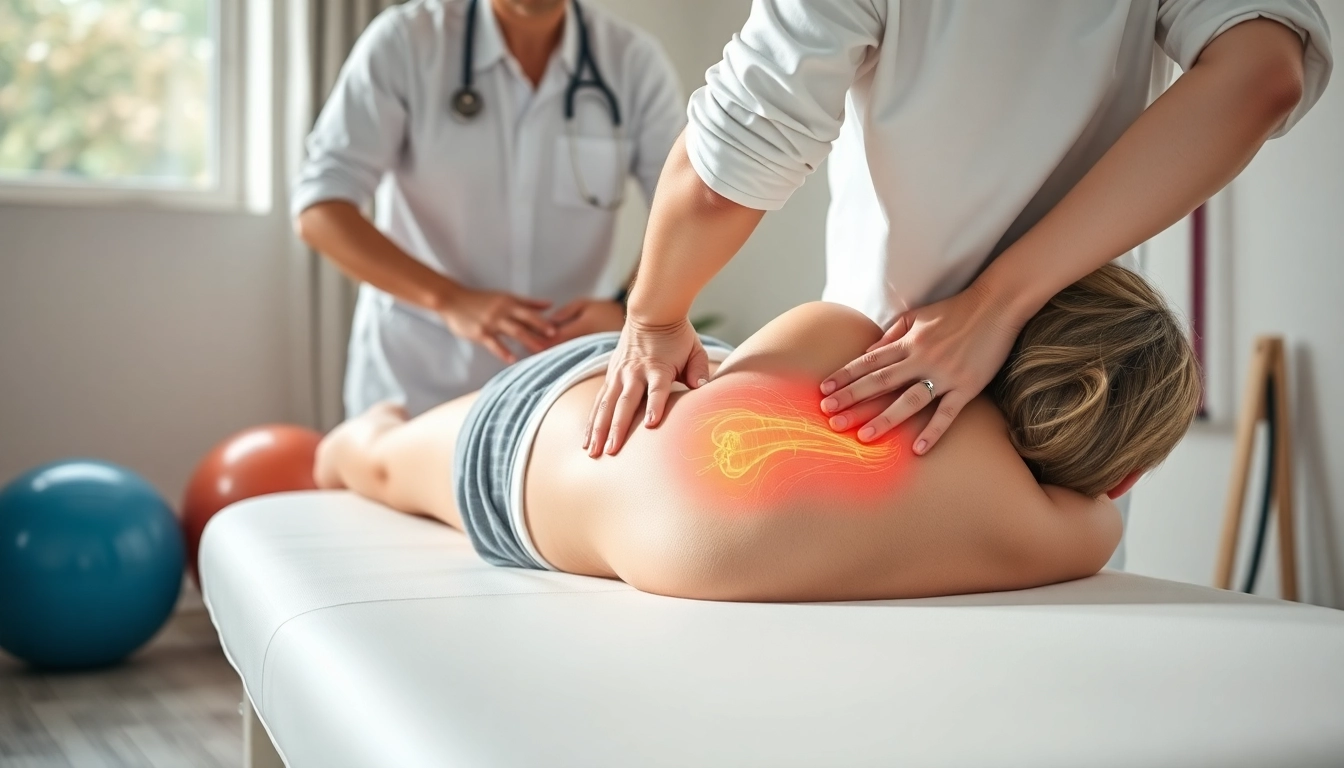Understanding Sciatica: What It Is and Symptoms
Defining Sciatica and Its Causes
Sciatica is a condition characterized by pain radiating along the path of the sciatic nerve, which extends from the lower back through the hips and buttocks and down each leg. In most cases, the discomfort of Sciatica is caused by a herniated disk, bone spur on the spine, or narrowing of the spine (spinal stenosis) compressing part of the nerve. This pressure causes inflammation, pain, and often some numbness in the affected leg.
The sciatic nerve is the longest nerve in the human body, and when it becomes compressed, symptoms can manifest in various forms. Understanding the causes is crucial for effective treatment. Beyond herniated disks, other potential causes include piriformis syndrome, degenerative disc disease, spinal tumors, or other structural abnormalities. Injuries from falls or accidents can also lead to the development of Sciatica. In some circumstances, the condition is part of a larger issue involving the lumbar spine that may require a multi-faceted treatment approach.
Common Symptoms and Pain Patterns
The symptoms of Sciatica can vary significantly, ranging from mild discomfort to debilitating pain. Typically, the hallmark sign is a sharp pain that radiates from the lower back down the back of one leg. Some individuals report a burning sensation along the path of the nerve, while others may experience a tingling sensation or numbness, particularly in the feet and toes. The intensity of the pain can escalate when sitting, coughing, or sneezing.
Pain can also present as a dull ache or a throbbing discomfort, which can lead to difficulties in mobility and daily activities. It’s also worth mentioning that some patients may experience weakness in the leg or foot on the side affected by the sciatica, leading to an inability to move or control the leg as normal. Understanding these symptoms is essential for individuals to identify the issue and seek appropriate medical advice.
When to Seek Medical Attention for Sciatica
Although many instances of Sciatica can resolve themselves over time, seeking medical attention is advised under certain circumstances. Individuals should consult a healthcare provider if they experience sudden, severe pain, if it extends beyond the knee, or if it is accompanied by loss of sensation in the leg or foot. Additionally, any signs of bowel or bladder dysfunction alongside Sciatica symptoms should prompt immediate medical attention, as these may indicate a more serious condition such as cauda equina syndrome.
Diagnosis of Sciatica: Techniques Used
Physical Examination and Medical History
The diagnostic process for Sciatica primarily begins with a thorough physical examination and a detailed medical history. The healthcare provider will assess the patient’s current symptoms, including their nature, duration, and severity, as well as any prior medical history that may be relevant. A physical examination typically includes a series of tests to evaluate muscle strength, reflexes, and sensory responses in the lower body.
Special attention will be given to how the pain behaves with physical movements, as this can help pinpoint the area of nerve irritation. For example, raising the leg while lying down may exacerbate the pain and serve as a diagnostic indicator of Sciatica. This process allows healthcare professionals to form a preliminary diagnosis and decide whether further testing is necessary.
Imaging Tests Commonly Used
If physical exams and patient history suggest Sciatica, healthcare providers may recommend imaging studies to better visualize the underlying causes. Common imaging techniques include:
- X-rays: While X-rays do not show soft tissues, they can help rule out other problems such as fractures or dislocations.
- MRI (Magnetic Resonance Imaging): MRIs are particularly useful for visualizing herniated disks and identifying nerve compression. They provide detailed images of soft tissues, including the disks and nerves.
- CT Scans: A CT scan may also be used to examine the spine and are often combined with myelography, which involves injecting a contrast dye into the spinal canals to provide a clearer image of the spinal cord and nerves.
Assessing Underlying Conditions Related to Sciatica
In some cases, it may be necessary to assess other underlying conditions that could be contributing to the Sciatica. This can involve additional tests for conditions such as spinal stenosis, which narrows the spinal canal and can lead to nerve compression. Other assessments may focus on conditions like arthritis, which can also affect the spine and the sciatic nerve indirectly. Recognizing and treating these underlying conditions is vital for comprehensive Sciatica management and can prevent the recurrence of symptoms.
Treatment Options for Sciatica: Exploring Various Approaches
Physical Therapy Techniques for Sciatica
One of the most effective treatments for Sciatica involves physical therapy. A licensed physical therapist can provide a personalized rehabilitation program tailored to the individual’s unique needs. Methods include stretching and strengthening exercises that focus on improving flexibility and building the muscles that support the spine. This can help alleviate pressure on the sciatic nerve and improve overall function.
Physical therapy may also include therapeutic modalities such as heat and cold therapy, electrical stimulation, or ultrasound, which aim to reduce pain and inflammation. A therapist may incorporate manual therapy techniques to improve mobility and functioning in the affected areas. Regular sessions and adherence to home exercise plans are key components to achieving symptom relief and functionality over time.
Medications for Pain Relief
When pain from Sciatica becomes too difficult to manage through physical therapy alone, several medications can provide relief. Over-the-counter anti-inflammatory drugs such as ibuprofen or naproxen can reduce inflammation and alleviate mild pain. For more severe cases, healthcare providers might prescribe muscle relaxants or corticosteroids to reduce inflammation around the affected nerve.
In some instances, doctors may recommend nerve pain medications such as gabapentin or pregabalin, which are specifically designed to target nerve pain. It’s essential to approach the use of medication alongside other treatment modalities for a comprehensive approach to managing Sciatica symptoms.
Alternative Treatments: Acupuncture and Other Therapies
In addition to conventional treatments, alternative therapies offer additional avenues for pain relief in individuals suffering from Sciatica. Acupuncture, based on traditional Chinese medicine principles, involves inserting thin needles into specific points on the body to alleviate pain and enhance overall wellness. Numerous studies indicate acupuncture can provide significant relief from pain associated with Sciatica.
Other alternative therapies include chiropractic adjustments designed to realign the spine and relieve pressure on the sciatic nerve, massage therapy to reduce muscle tension, and cognitive behavioral therapy aimed at managing the emotional aspects of chronic pain. Each method can complement traditional treatments and help manage symptoms more holistically.
Home Remedies and Lifestyle Changes for Sciatica
Effective Exercises to Alleviate Symptoms
Incorporating specific exercises can significantly aid in alleviating Sciatica symptoms. Exercises focusing on stretching and strengthening can be beneficial. Common exercises include:
- Piriformis Stretch: This stretch targets the piriformis muscle, which can contribute to nerve compression when tight.
- Knees to Chest Stretch: This helps alleviate back pain by gently stretching the lumbar spine.
- Cobra Stretch: A great way to extend the spine and relieve pressure on the Sciatica nerve.
Safely performing these exercises regularly can help manage discomfort and improve mobility. Consulting with a physical therapist for personalized recommendations can optimize their effectiveness and safety.
Ergonomic Modifications for Daily Activities
Making ergonomic modifications in daily life can noticeably enhance comfort and reduce the strain on the lower back. For those working at desks, using an ergonomic chair that supports the lumbar spine and allows for proper posture can make a significant difference. Elevating computer screens to eye level to avoid slumping and using a footrest to promote better circulation also contribute to a healthier workspace.
When engaging in activities that involve prolonged sitting or standing, it’s essential to take regular breaks to stretch and move. Adjusting daily habits to promote better posture during walking or lifting can also diminish the severity of Sciatica symptoms over time.
Importance of Maintaining a Healthy Weight
Excess weight can exacerbate pressure on the spine and contribute to Sciatica pain. Maintaining a healthy weight through balanced nutrition and regular exercise can help lessen the risk of developing symptoms. Focusing on whole foods, including fruits, vegetables, lean proteins, and whole grains, while avoiding processed and sugary foods is key to weight management.
Regular physical activity not only aids in weight maintenance but also promotes flexibility and strength, which are vital in preventing and managing Sciatica symptoms. A tailored fitness program that includes cardiovascular workouts, strength training, and flexibility exercises can help establish a sustainable, healthy lifestyle.
Preventing Sciatica: Long-term Strategies
Effective Stretching and Strengthening Routines
To prevent the onset of Sciatica, developing a regular routine of stretching and strengthening is vital. Consistent stretching of the back, hip, and leg muscles can improve flexibility and reduce tension. Strengthening exercises should focus on the core muscles that stabilize the spine, as a strong core can support better posture and alignment.
Incorporating routines such as yoga or Pilates that emphasize stretching, balance, and core strength can be particularly effective. Finding a variety or combination of practices helps keep the routine engaging and enjoyable while contributing to overall spinal health.
Posture Correction Techniques
Proper posture is essential in preventing the development of or worsening Sciatica. This can involve learning how to sit and stand correctly, ensuring that the spine maintains its natural curves, and using supportive furniture. Regularly checking posture throughout the day and taking corrective measures can reinforce healthy habits. An awareness of body mechanics, especially while lifting heavy objects, is also crucial. Remembering to bend from the knees rather than the waist can prevent unnecessary strain on the lower back.
Regular Physical Activity and Its Benefits
Staying physically active is crucial for overall health and specifically for preventing Sciatica episodes. Regular exercise helps maintain strength and flexibility in the muscles that support the spine, thereby lowering the risk of injury or nerve compression. Engaging in at least 30 minutes of moderate physical activity most days of the week is a recommended target. Activities like walking, swimming, or cycling are low-impact options that are often well-tolerated by those with Sciatica.
Employing these long-term strategies can enhance wellness and promote longevity, reducing the likelihood of recurring Sciatica symptoms and improving quality of life. With the right approach, individuals can find relief and maintain control over their health.



